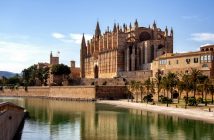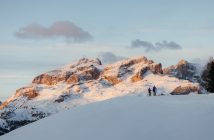It started with a frisk. A padding down. Then the shoes were removed, followed by trousers and shirt until goosebumps prickled the naked skin. The authorities exert their questions with a tone implying a ‘guilty’ sign hangs from your neck. Immigration is tough, and I haven’t even left London.
Israel is a work in progress. The Israeli people want to be loved. They know that it’s more than the world reads in newspapers. There is no other place in the world as gilded with great expectations as the Holy Land. It is a centre point and more than a religious heartland. Its heart is religion but its veins are in the earth. It has one foot in its archaeological history and the other firmly marching ahead through the fireworks of the twenty-first century.
In Tel Aviv, a modern metropolis rests on a shore that stretches from the heart of the town to Jaffa, an ancient port city where Greek mythology writes that Andromeda was chained to a rock as a sacrifice to a sea monster, saved from death by Perseus.
Tel Aviv is the second most populous city in Israel and has all the fittings for a cosmopolitan boomtown. Its culture and hip 24-hour lifestyle has made it a popular terminal with students, as well as being an economic hub and leading tourist destination. It’s a city with a beat where segregation is barred and the Jewish, Arab, Christian and Armenians live side by side – content, and drinking good coffee.
Arriving in Jerusalem, you can’t help feeling a sense of mystery. There have, perhaps, been more pilgrimages made to the Holy Land than any other location on Earth. Today, donkey transport has been replaced by tourist buses bundled with Americans and newly-enlightened believers, all wanting to walk through the City of David, stand face-to-stone with the Western Wall, or ‘Wailing Wall’ (Judaism’s most sacred site), and to retrace the Via Dolorosa (14 Stations of the Cross). But more than this – beyond the crumbly yellow buildings and Suleiman’s curtain wall – is the Church of the Holy Sepulchre (strangely enough, you can hire a half-sized wooden cross from here and stumble the Jesus route for yourself).
Approach the Church of the Holy Sepulchre and the first thing you’ll see is Jesus’s polished morgue slab (from which, according to the Bible, he resurrected, and in doing so created Christianity. Without the resurrection, crucifixion marks a full stop). Pilgrims kiss the cold marble and rub cloth and clothing in order to bless the materials in the most holy of holies. Behind, up a windy stairway, is Golgotha, or ‘Hill of Skulls’, where Jesus was crucified. Today it’s a rather exotic shrine of candles and colour where you form a line in order to creep below the alter and see, kiss, pray, chant, cry and photograph the rock on which Jesus passed. It is life, death and resurrection under one roof.
Like the majority of European roads, Jerusalem is a snake path of tourist buses and suicidal drivers. Happy honkers. It’s loud and lively. Old Jerusalem, unlike Tel Aviv and the package holiday resorts around the Dead Sea (floating in the Dead Sea is something everyone should say they’ve experienced. It’s effortless, probably like hanging out in space), has a more competitive religion, illuminated by the divine and heavily referenced in the stories we hear as children, to which we are all bound by history. We even compare it to England during hymns: “Till we have built Jerusalem/In England’s green and pleasant land.”
And if you’re near the Dead Sea, then take a 4×4 off-road tour of the salt desserts and Negev. One of my highlights was Gil Shkedi’s air-conditioned desert vehicle bumping and battering me around the salt planes. Salt is an economic agent in Israel, a tinted exfoliator and moneymaker. It’s the oldest currency in the world, the origin of our word ‘salary’.
The ancient Phoenician and Crusader seaport of Akko is well worth a pit stop. It was the final stronghold of the Crusader state, captured in 1191 by Richard I. Here you’ll discover the Knights’ Halls and perhaps the best fish restaurant in Israel, Uri Buri.
Another highlight – ‘height’ the predominant word – is Massada, the ruins of King Herod’s mountaintop fortress and the last bastion of the Jewish revolt against the Romans in 73 C.E. A cable car takes you to the peak with dizzy views across the Judean desert.
Back on the sands, history is being made. Museums are being built, modern sculptures erected and religions coexist. Even the taxis are being painted yellow to replicate those icons of New York. I saw t-shirts being sold: “Don’t worry America, Israel is behind you.” They’re a persistent bunch. The Israelis embrace and persevere, they move forward.





1 Comment
A really excellent piece. Funny and insightful.